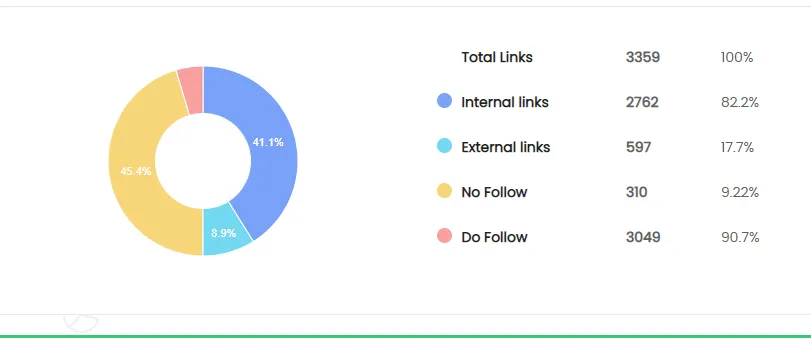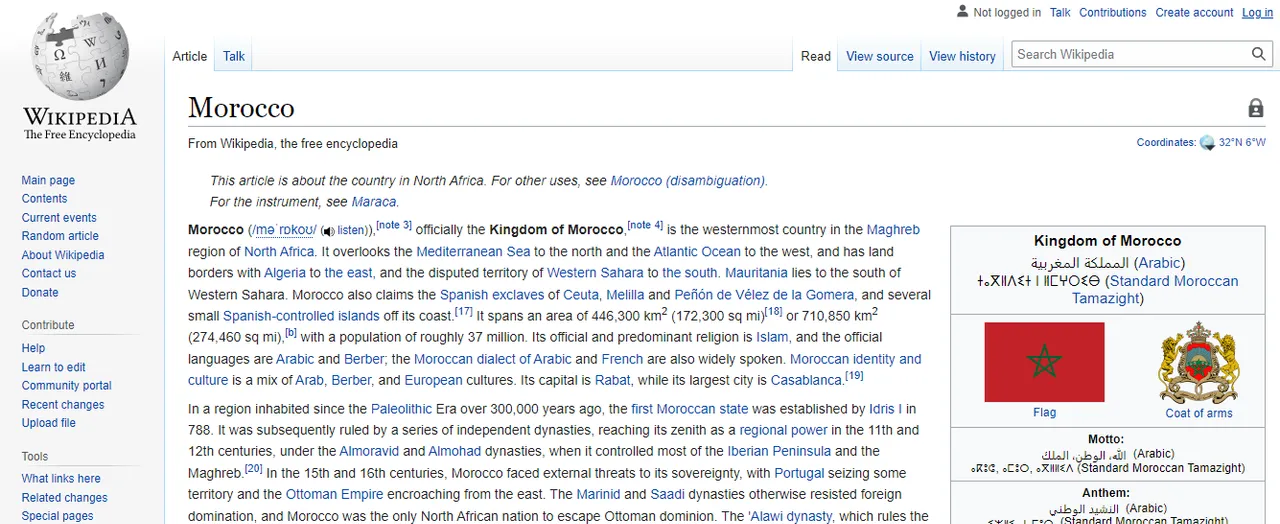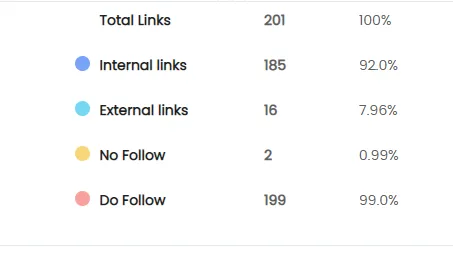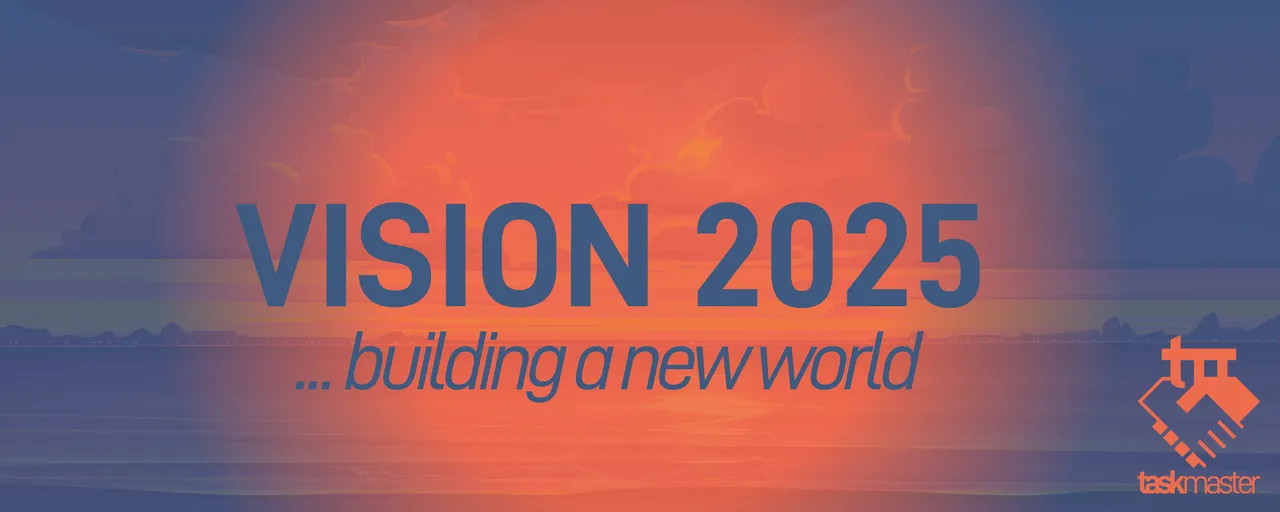There is a lot taking place on Hive. We have a number of projects all looking to enhance the ecosystem in their own way.
In the end, there will be many things which captures the attention of the general public. We are still in the early building stages. Web 3.0 is something that most are not aware of. However, Hive is serving as a foundation.
Throughout the last year, we discussed how Hive is an immutable, decentralized database. This is a factor that was overlooked by many. Here we can see where value is derived in ways that other blockchains simply cannot.
For that reason, a proof of concept was started whereby Hive was used to recreate something like Investopedia. We know databases have extreme value, especially to search engines. The granddaddy of them all is Wikipedia.
The traffic that is driven to that site simply from the search engine results is amazing. That is something that we want to try and capture on Hive.
Therefore, the dream is to be promoting Hive with a billion links.

A World Of Links
Hypertext is the foundation of the Internet. This is where the text (along with images) can be linked to other information. HTML, Hypertext Markup Language, is the format that most webpages use.
Links are very important.
There are two types: internal and external. The former is when a website links pages to itself whereas the latter are links from outside the site.
Search engines send out crawlers that do nothing more than travel through the world of links and index content. This is very important for a website. To garner any traffic, the search engines need to be know you exist. That means having many different feeder systems. At the same time, once they find the site, you want them bouncing around a while.
Backlinks are a vital component. This is where a page is linked on others which then directs the crawler to that page. From there, it exits by following the links off that page.
Obviously, the more links coming in the better. At the same time, the quality of the links is also incorporated. Being tied to ABC News or CNN is of greater benefit than Joe's Blog. Nevertheless, this often cannot be controlled.
What can be focused upon is the internal links. By adding more to the content that is being created, we can see how this will keep the crawler busy. For this reason, we provide a wealth of backlinks while also having each page full of links that remain on site.
Again, the king of this is Wikipedia.
Hive: A Billion Links
The image above is the results of a link counter for Morocco.
Before getting into the details, we will acknowledge the challenge before us is huge. Blockchain sites are not ranked well, especially Hive. There is duplicate content since all posts show up on most frontends. This is a negative to the search engines.
We also have the problem with the websites not being optimized. Hive.Blog appears to be the best with the others falling short in this area.
Finally, we are new to the scene. Many of the top databases were developed over years.
All of this makes the task more difficult but we can try to counter that with numbers.
Going back to Morocco, here we see the enormity of the project. There are over 3,300 links to this page alone. Internal links total 2,762. To contrast, all of LeoGlossary is about 2,500 pages. Wikipedia have millions of pages like this.
From this we can see how this site has billions upon billions of links. Not even accounting for the external links, which will be mammoth, just the internal linking puts it far ahead of everything else.
With Hive, the goal has to be to create something like this on a much smaller scale.
In looking at the Wikipedia page, we can see how they get so many links.

To start, throughout the text there are a ton of links to others pages from that website. This is easy to do when there are millions of them. There is something else, however, that is very interesting.
The template for the page itself is packed full of links. Look at the left hand side which is a table of links that is standard on every page. The links in the upper right hand corner mirror that. The site itself is designed to send users around the Wikipedia ecosystem.
Keep in mind the crawler idea as we deal with the simple math behind all this.

Multiplication
This image is for the results of the LeoGlossary main page. As we can see, there are over 200 links total. Obviously, this is a far cry from the 3,000 in Wikipedia but it is growth compared to where we were a few months ago. At that time, a page with 50 links was rare.
Going back to the crawler, think of this in terms of the journey it travels. This might not be exact but the mental exercise will frame things in an understandable way.
Let us consider each backlink as a pathway. Thus, for our example, we will presume 100 links coming in. We are not going to deal with weight or where they come from. The key is we have 100 links going to our page.
We will also use the 200 links on the page. Hence, we enter the page on 100 different paths and each of those will break off to 200 more. Thus, doing basic math we come up with 20,000 links.
Obvious this is not 20K direct links. What we are dealing with, however, is the basis of the Internet. It is a system of hyperlinks. Under this example, we have 200K links tied together.
Now we see how to grow this. There are two ways.
The first is to generate more links going to the webpage. Let us presume we double the links from 100 to 200. Once that happens, we see the number jump to 40K (200 x 200).
Next we look at the page itself. Here is where things can get real interesting. What happens if we move the links on the page from 200 to 300? Suddenly we are looking at the number for our crawler reaching 60K.
Again, these are not direct links but, we can easily see how the more of those that exist, the more everything multiplies.
It seems this is one of the secrets to Wikipedia's success.
Hive's Database
LeoGlossary is a database that is really growing in terms of links. There are a few pages which are starting to stand out.
In addition to the main page, we have the following:
These are commonly used on Hive and the goal is to keep adding to the pages until there is over 500 links on each one.
At the same time we also have niche pages such as SplinterGlossary and 3Speak which keep growing. Simply adding depth to different pages ends up generating more links.
Here is where Hive can create a powerful database to help generate organic traffic to the sites.
The key is to become a legitimate information center. That is what the search engines, especially Google, look for. If the content is relevant to the reader, it tries to match that. Links serve that purpose by bringing more information to the table.
There is another piece to this puzzle which really hasn't been discussed. As the database grows, it is possible to start building lists. This is another ting Wikipedia excels at. Since there is so much data, they have lists that keep expanding.
For example, they keep a list of the deaths each year. Here are the Deaths in 2023. Only a few days into the year and notice how many links are already established.
This is a concept we are trying to bring to Hive. The best thing that most can do to help out is to use the database and set up links within the articles being written. We have thousands of articles appearing on Hive each day. If we can access those, as the database is expand, simple multiplication takes over.
In Conclusion
Is this the magic bullet that is going to suddenly propel Hive to new heights?
Certainly not. As mentioned at the start of this article, there are challenges beyond our control. Nevertheless, we can utilize our production of content to our advantage by tapping into what is already being created.
If we play the numbers game, we can see how big things can become. Would we prefer to get a cryptocurrency link from Cointelegraph or Blockworks? Of course. That, unfortunately, is outside our control.
The key is to build a resource center that grows in value each time we add to it. Hive is a decentralized database that anyone can tap into. By putting the content out there for anyone to use, we can help to generate value for the entire ecosystem.
Another advantage is that it is our database. We have the ability to show Hive prominently throughout. We already Hive Glossary which is full of Hive related terms. This also will keep growing as we expand the database.
All of these are resources that are being provided to Hive.
Let us all participate and help to grow things.
If anyone want to play around with different Hive pages, here is the link counter tool.
If you found this article informative, please give an upvote and rehive.

gif by @doze

logo by @st8z